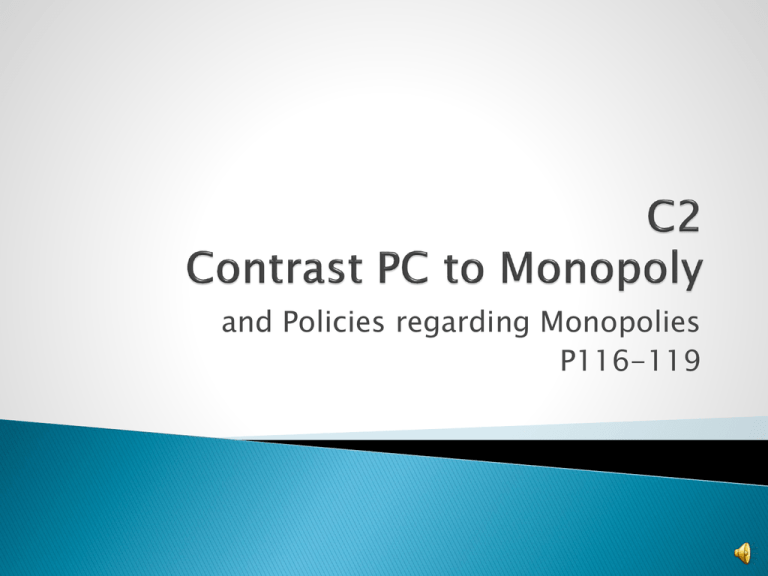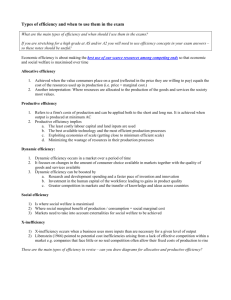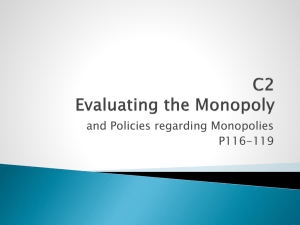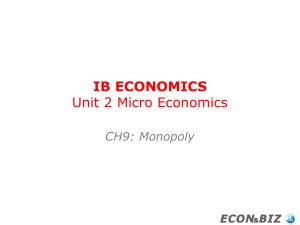Marginal-Cost Pricing
advertisement

and Policies regarding Monopolies P116-119 1. 2. 3. 4. Explain, using diagrams, why the profit maximizing choices of a monopoly firm lead to allocative inefficiency (welfare loss) and productive inefficiency. Explain why, despite inefficiencies, a monopoly may be considered desirable for a variety of reasons, including the ability to finance research and development (R&D) from economic profits, the need to innovate to maintain economic profit, and the possibility of economies of scale. Evaluate the role of legislation and regulation in reducing monopoly power. Draw diagrams and use them to compare and contrast a monopoly market with a perfectly competitive market, with reference to factors including efficiency, price and output, research and development (R&D) and economies of scale. Where S = D in the market, (i.e MC = For a competitive firm, price equals marginal cost. For a monopoly firm, price exceeds marginal cost. AR) Price Allocative inefficient price and quantity Marginal cost Monopoly price Allocative efficient price and quantity PC price Marginal revenue 0 Monopoly PC quantity quantity Demand Quantity What do the following areas or points represent : 1. A 2. B 3. C 4. D 5. G 6. CFAO 7. DGBO 1. A = monopoly output 2. B = perfect comp output 3. C = monopoly price 4. D = perfect comp price 5. G= perfect comp equilibrium point 6. CFAO = monopoly total revenue 7. DGBO= perfect comp total revenue 8.But what is triangle FGH? While a market with perfect competition will always move to the output where demand =supply (AR=MC), a monopoly will operate where MC=MR which restricts output and increases the price causing a deadweight loss 1. Pass Antitrust laws 2. 3. 4. 5. To prevent formation of mergers. To break up large companies. To prevent companies from performing activities which make markets less competitive. In NZ the Commerce Commission aims to promote competition in markets. Turning some private monopolies into public enterprises (usually natural monopolies). Regulate pricing Doing nothing at all – why not? 1. 2. Regulating the price to Allocative Efficiency (e.g. in NZ the government runs the Rail Service) – but may have to subsidise a loss. Regulate the price to a low or normal profit situation. (no subsidy required but neither is it allocatively efficient.) Price Marginal cost Average total cost Average total cost Regulated price Loss Demand 0 Quantity Price Marginal cost Regulated price Average total cost Demand 0 Quantity Markup pricing mc AC pricing ac MC pricing mr ar Explain and illustrate why, despite inefficiencies, a monopoly may be considered desirable for a variety of reasons, including: ◦ the ability to finance research and development (R&D) from economic profits ◦ the need to innovate to maintain economic profit, and ◦ economies of scale that results in lower prices than a competitive market (even at mark-up pricing).






